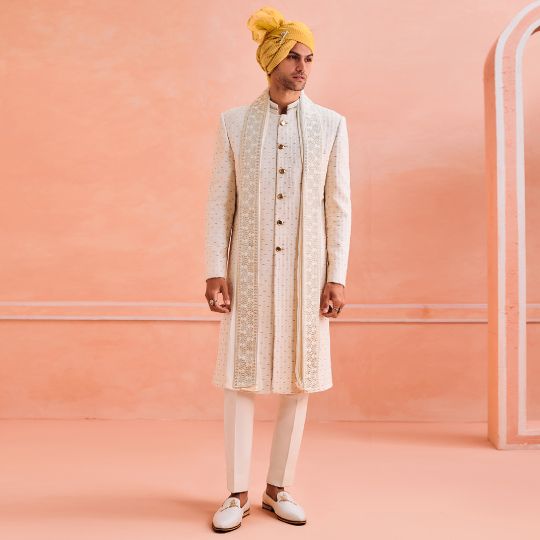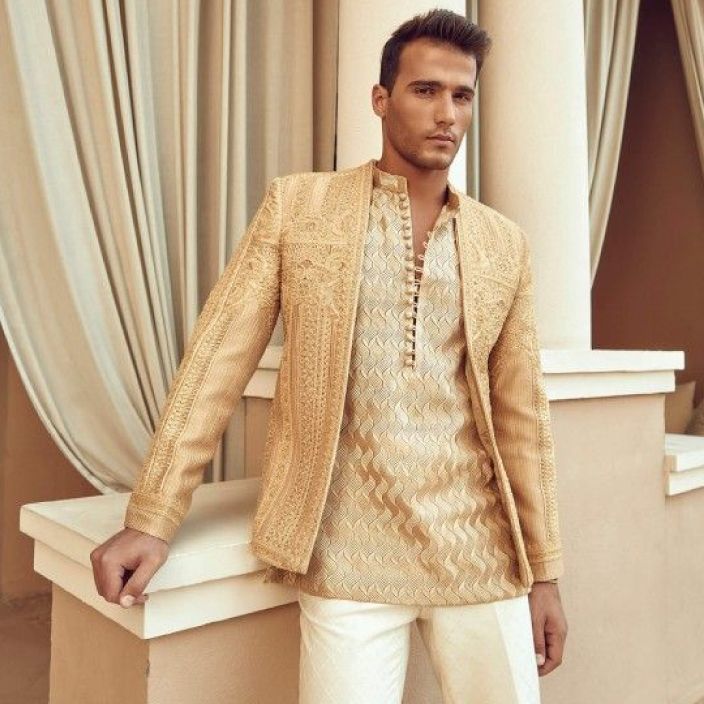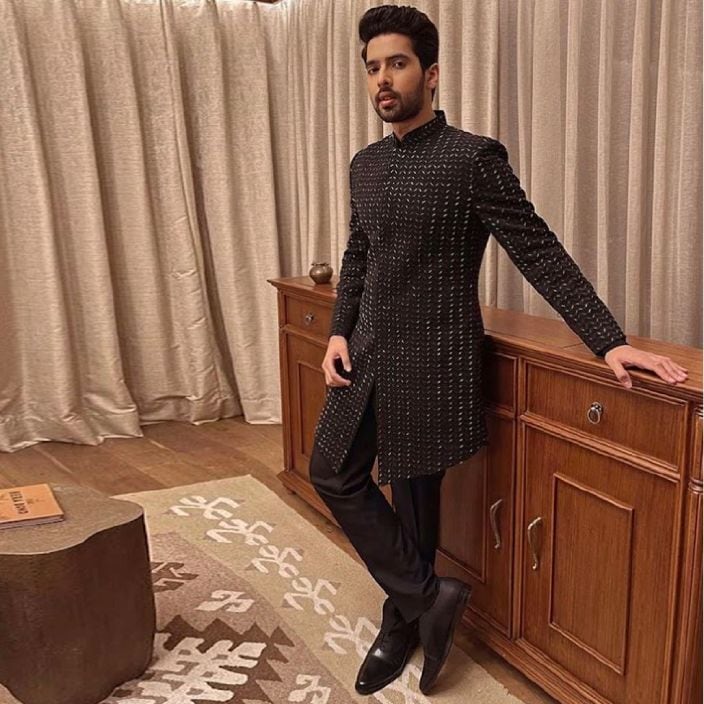For best prices and early deliveries, WhatsApp us at. 918488070070

Sherwani
Sherwani is an Indian coat customised with structured tailoring featuring a long length and full sleeves. Buttoned down the front, it falls below the knees, featuring a closed stand collar. The sherwani evolved in India in the 19th century in South Asia. Sherwani is a popular ensemble in India for weddings and festive events. The sherwani signifies dignity and noble etiquette, carrying a regal feel. It is generally paired with a churidar or dhoti as the lower garment.
History Of The Sherwani
The name Sherwani is derived from Shirvan or Sherwan, a region of Azerbaijan where the folk dress resembles a sherwani. Its link with Turco-Persian favouring during the Middle ages gave it a Mughalised inspiration and form. Its longer length and opulence result from Mughals giving the Indian Achkan a westernised style.
The Persian cape was developed into a sherwani following the European way of wearing outer coats.
Variations Of The Sherwani
Like its explicit historical references, the sherwani styles can also be listed in significantly different styles. The Jodhpur sherwani is a royal one found in the wardrobes of Rajasthani Maharajas, customised with delicate fabrics and bejewelled ornamentation.
The Angrakha sherwani highlights the chest with a wrap-over tie-up and an A-line silhouette. At the same time, the Achkan is akin to a classically constructed kurta, featuring a mandarin collar usually shorter than the traditional sherwani.
On the other hand, the Chipkan sherwani descends from the Mughal era. The jacket style Sherwani is a hybrid between Asian and western cultural influences.
While the Achkan hails from Lucknow, Sherwani is a noble gift from Hyderabad. The Angrakha initially inspired the Sherwani, but during the Victorian era, the frock coat silhouette with a centre button placket came into being in England.
Significance & Symbolism
The sherwani ensemble was a symbol of Indian pride during British rule. The revolutionaries of the Aligarh movement adopted the attire as plain jackets in solid colours and without embellishments. Prominent leaders like Pandit Jawaharlal
Nehru and Jinnah patronised the stand collar trimmed sherwani as their signature looks, prompting the youth of India to embrace the attire.
Evolution Of The Sherwani
Originally related to the Muslim aristocracy during British rule, it was the European-style court dress for Mughal nobles and royals of Northern India. It gained more popularity during the late 19th century. The sherwani was first made in Lucknow during the 1820s, after which the royals and aristocrats of the Indian subcontinent adopted the ensemble and
made it famous amongst the common population. Several politicians and governors have also patronised the sherwani and continue to do so.
Shop Sherwani
Pernia’s Pop-Up Shop brings you an array of regal and contemporary renditions of the Sherwani, whether you’re the groom, the groomsman or a part of the wedding tribe. Check out designer labels like Tarun Tahiliani, Rohit Bal, Spring Break, Jenjum Gadi, Vanshik, Siddartha Tytler, etc. for the celebrations on your calendar!

